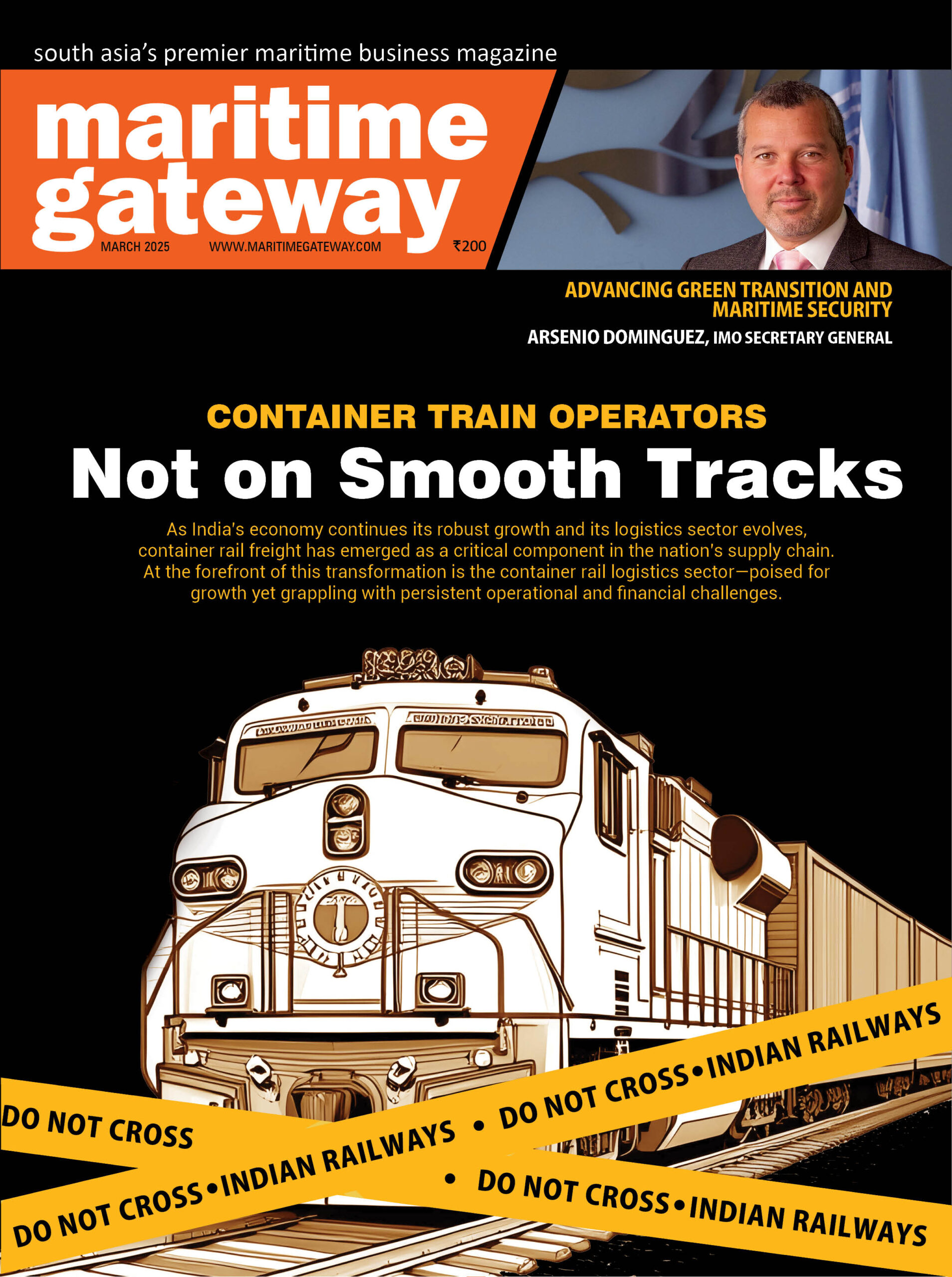“With the regulatory framework and the demand increase, more than 50,000 ships are to be built in less than 30 years. That is a lot of work to be done!” says Antony Prince, President & CEO, G T R Campbell Marine Consultants Ltd.
The construction of a ship starts with the designing part. Does a ship design has a far reaching impact on the entire lifecycle of the ship? Please explain?
Yes indeed. I always tell my team and Clients that “the profitability of a ship building project is decided on the drawing board”. Ship design has a significant impact on the entire lifecycle of the vessel.
Some key points which are decided by design are:
Performance and Efficiency:
The design determines the ship’s performance characteristics, such as speed, maneuverability, cargo carrying capacity, stability, habitability, and fuel efficiency. A well-designed ship can operate more efficiently throughout its lifespan.
Construction & Operational Costs:
A good designer considers construction aspects from early stages of the design, including material availability, weight and space limitation of yard facilities, optimum block arrangement, accessibility during construction, etc. Design choices also impact maintenance requirements, repair costs, and operational efficiency over the ship’s lifespan. Factors such as selection of equipment, accessibility for maintenance, ease of repair, and the use of durable materials all contribute to the long-term cost-effectiveness of the vessel.
Safety and Reliability:
The design influences the ship’s safety features like stability and structural integrity, affecting its ability to withstand harsh weather conditions, collisions, and other hazards. A robust design enhances the vessel’s reliability and reduces the risk of accidents and downtime.
Lifecycle Environmental Impact:
Ship design influences environmental factors such as emissions, noise pollution, and ecological impact. A sustainable design can minimize the environmental footprint of the vessel throughout its lifecycle, meeting regulatory requirements and reducing long-term environmental liabilities.
Adaptability and Upgradability:
A well-thought-out design allows for future modifications, upgrades, and retrofits to adapt to changing regulatory requirements, technological advancements, and operational needs. This flexibility extends the ship’s useful lifespan and enhances its value over time. For example, one of the most perplexing questions to a ship owner today is what fuel he should consider for his new building projects. Five years ago, we came up with ‘alternate fuel ready’ concepts for handysize bulk carriers which would give clear pathways for retrofit of multiple fuel options when they decide to go for the same in future.
In the recent past there has been a trend of ordering huge mega sized vessels to bring down the logistics cost and the current trend is towards developing ships that run on green fuels. Over the years what has changed in the ship designing with these trends?
Many things have changed in ship designing over the years. The regulatory environment has become stringent over the years and the awareness of environmental impact have increased tremendously. The two aspects – trend of ordering mega sized vessels and trend towards developing ships that run on green fuels are having significant influence on the ship designs.
Some key points are:
Mega sized Vessels:
With the demand for increased efficiency and lower logistics costs, ship owners and operators have focused on creating larger vessels with higher cargo capacities. From a designer perspective, the major challenges for these are stability, strength, and control systems:
Advanced stability control systems, dynamic positioning technology, and enhanced navigational aids are being integrated to improve the safety of mega-sized vessels.
The structure design gets extremely challenging with complex cargo loading and unloading requirements, environmental loading and fatigue considerations, weight distribution and stability, and requirement of designing with plates and stiffeners of very high scantlings.
Mega ships present operational challenges related to navigation in confined waterways, port access limitations, berthing restrictions, and interaction with other vessels in congested shipping lanes. Designers must account for these operational constraints in the vessel’s design, including maneuverability characteristics, bridge visibility, propulsion systems, and navigational aids, to ensure safe and efficient operation in diverse operating environments worldwide.
Apart from new builds a lot of ship owners are going for retrofitting or re-engineer ships to meet new regulations, improve efficiency & versatility, enhance capacity, or even convert the vessel type. How do you help these customers?
Improving the efficiency of the existing fleet is a major challenge. The average age of the world commercial vessel fleet is over fifteen years now and it is important that we operate them in the most efficient way for the next five to ten years respecting the emission requirements stipulated by IMO.
We help our customers in evaluating their options for suitable technologies, equipment, and solutions for retrofitting or re-engineering purposes, taking into account the specific requirements and constraints of the vessel, technical feasibility, cost effectiveness, and regulatory compliance. This may include propulsion system upgrades, emission control systems, fuel efficiency improvements, structural modifications, and more.
We also assist in evaluating the expected performance improvements and potential benefits of retrofitting or re-engineering initiatives, using simulations, modeling, and data analysis techniques.
How does a ship design influence the charter rates of a ship? Can a better ship design help it obtain higher charter rates? Please explain?
Yes, ship design can indeed influence the charter rates of a vessel, and a better-designed ship can often command higher charter rates.
Some key points are as listed below.
Efficiency and Performance:
The possibility of design optimisation with various engineering techniques including CFD, FEA, etc. have improved tremendously over the years. A vessel with optimized hull design, advanced propulsion systems, and fuel-efficient engines can consume less fuel and operate more cost-effectively, leading to lower operating expenses for the charterer.
Cargo Capacity and Flexibility:
This has been my trademark for all my designs. The design of the ship’s cargo holds, loading/unloading equipment, ballasting / de-ballasting system and overall layout can affect its cargo capacity and flexibility. A vessel that can accommodate a wide range of cargo types, sizes, and loading/unloading methods will be more appealing to charterers, especially in dynamic market conditions where cargo requirements can vary.
Safety and Reliability:
A ship with a robust design, modern navigation and communication systems, and a strong safety record can instill confidence in charterers.
Ultimately, charter rates are also influenced by market demand and competition.
What is the role of technology in ship designing? Could you share some latest technology trends in ship designing?
Some of the latest technology trends in ship designing include:
- Advanced Computer-Aided Design Software for design, analysis, and detailing
- Virtual Reality (VR) and Augmented Reality (AR) which gives a much more immersive experience to various parties involved in the project helping faster and more thought through decisions.
- Usage of advanced materials and construction techniques including usage of high strength, low weight materials and robotic building techniques
- Digital twin technology
- Smart ship system and automation
- Alternate fuels
- Alternate propulsion technology like wind assisted propulsion
- Artificial intelligence – AI and machine learning algorithms are being applied to ship design and operation to optimize performance, predict maintenance needs, and improve decision-making.
You have worked with Japanese, Chinese and Indian shipyards. Where do Indian shipyards stand in the global scenario in terms of quality, expertise and use of technology in building better ships and in meeting delivery schedules?
As you know, except for cruise vessels, most of the commercial vessels are being built in China, Korea, and Japan. India’s capabilities and capacities are no way comparable to these countries when it comes to commercial ship building. Personally, I feel, we can build quality vessels. My experience at Cochin Shipyard has been excellent. They built vessels which outperformed those built in China for the same design. However, I don’t think it can be generalised to Indian ship building industry.
We have to go a long way when it comes to planning, skill development, usage of technology, engineering, infrastructure development, and project management.
Tell us about ship designing as a career? Does this sector offer a promising future for aspiring candidates? Will there be demand for more ship design engineers in the days to come?
I have been in the ship building industry for more than 52 years and I have never come across such an exciting time for the industry. With the regulatory framework and the demand increase, more than 50,000 ships are to be built in less than 30 years. That is a lot of work to be done! Combined with all the technologies and challenges we discussed; I believe the industry providing a promising future for aspiring candidates. Ship designing offers a dynamic and rewarding career path for individuals passionate about engineering, naval architecture, and maritime technology.







